Do you have a question about the Mackie CR1604 - VLZ and is the answer not in the manual?
Explains the manual's structure, layout, and icons.
Describes the Patchbay, Channel Strip, and Output Sections of the mixer.
Directs users to the Glossary and other appendix sections for more information.
Instructions for converting the mixer for rack installation.
Explanation of the purpose of indicator stripes on switches.
Overview of the mixer's versatile input/output design and capabilities.
Details on microphone inputs, phantom power, and related warnings.
Description of the 1/4" line input jacks and the trim gain control.
Information on using insert jacks for effects and direct outputs.
Using direct outs for multitrack monitoring setups.
Information on aux send outputs for effects and monitors.
Explanation of serial and parallel effects usage.
Description of aux return inputs and subgroup outputs.
Details on control room, headphone, and tape output/input jacks.
Details on main insert/output jacks and mono features.
Information on power connection, cable, and fuse replacement.
Details on the main power switch and its indicator light.
Information on phantom power control and its indicator light.
Description of the 12V BNC lamp socket for lighting.
Explanation of unity gain and fader controls.
Explanation of channel assignment switches (1-2, 3-4, L-R).
Explanation of the solo (AFL/PFL) function for monitoring channels.
Details on the -20 (SOLO) and OL (MUTE) status indicator LEDs.
Explanation of the channel mute switch and pan pot operation.
Details on the equalizer controls for frequency adjustment.
Explanation of the low cut filter switch for bass frequency reduction.
Description of the AUX send level knobs for routing signals.
Explanation of the pre/post send switching for AUX 1 & 2.
Details on shifting AUX sends 3-4 to outputs 5-6.
Description of the main mix fader operation.
Explanation of subgroup faders and assigning them to the main mix.
Control and routing options for stereo tape input.
Choosing audio sources and controlling monitor output levels.
Explanation of Normal (AFL) and Level Set (PFL) solo modes.
Solo level control and status indicator lights for solo awareness.
Description of the peak metering system and aux talk feature.
Master level controls for AUX sends 1 & 2.
Soloing aux sends and using them for monitor effects.
Routing Aux Return 3 to Main Mix or Subgroups.
Routing Aux Return 4 to C-R/Phones only.
Soloing all stereo aux returns simultaneously.
Instructions for modifying post-EQ aux sends for audio signal routing.
Common issues and solutions for mixer problems.
Instructions for obtaining service and returning the mixer.
Detailed guide to using XLR connectors for audio signals.
Explanation of TRS and TS connectors for audio use.
Information on switched jacks and RCA connectors.
How to connect balanced to unbalanced signals.
Explanation of insert jack send/receive functionality.
Guide to using stereo inputs and returns.
Benefits of balanced audio connections for noise immunity.
Explanation of phantom power requirements for microphones.
Installation tips for sound systems.
Explanation of grounding for safety and noise reduction.
| Channels | 16 |
|---|---|
| Mic Preamps | 16 |
| EQ Bands | 3-band |
| Phantom Power | Yes |
| Type | Analog Mixer |
| Width | 17.5 inches |
| Microphone Preamps | 16 |
| Bus Outputs | 4 |
| Inputs - Mic Preamps | 16 x XLR |
| Inputs - Line | 16 |
| Outputs - Main | 2 |
| EQ Bands Detail | High, Mid, Low |
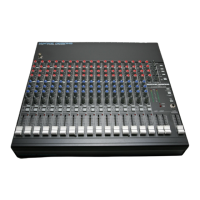
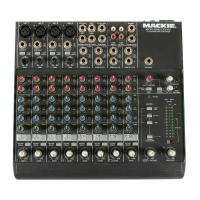
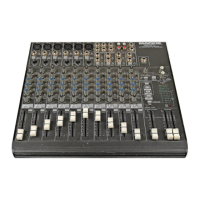

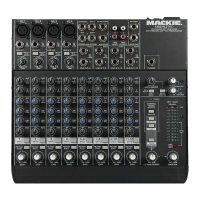



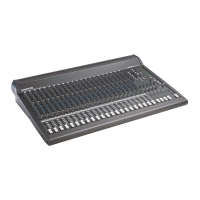
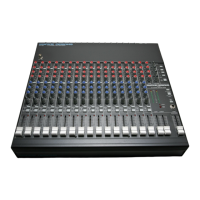


